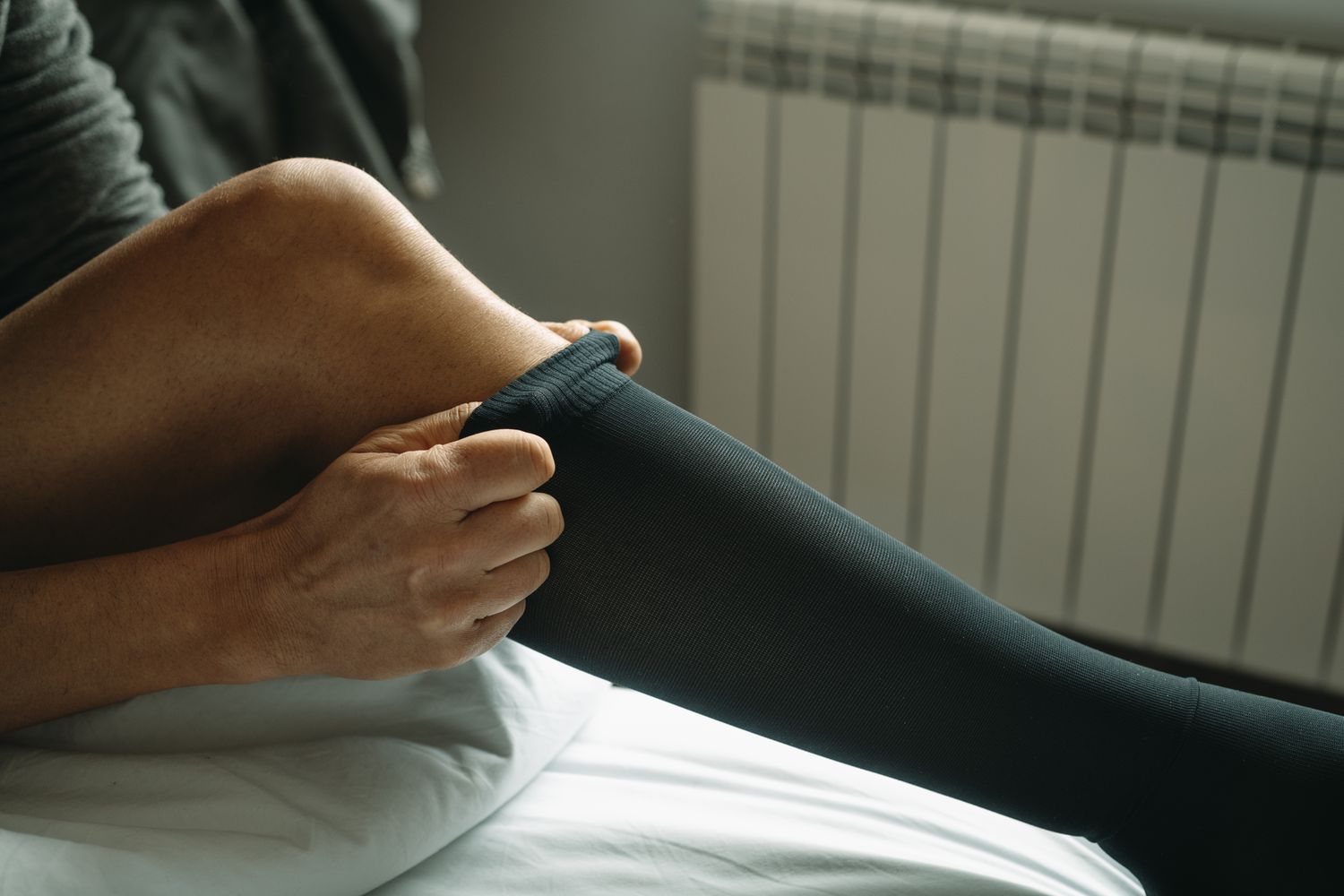"Are Compression Socks Necessary for Long Flights?"

Preparation is essential if you want to stay comfortable on a long-haul flight, and many TikTokers recommend adding one thing in particular to your preflight to-do list: putting on compression socks.
Compression socks, also known as compression stockings, are often associated with aging because they help with circulation, which can worsen over time. But a recent TikTok trend has people flaunting their compression socks and urging others to don them on long flights as well—regardless of age or health status.
“I travel a lot,” said one creator, whose video has received over 220,000 views, “and one of my biggest tips I can give you guys—no matter what class you’re traveling in—it’s always important to wear these compression socks.”
But can wearing compression socks on long flights really offer health benefits for everyone? Here’s what you need to know about these socks, including who should consider wearing them while flying.
Compression socks are tighter-fitting socks designed to increase blood flow and prevent blood clots by gently squeezing the calves and feet, stimulating circulation.
The mild pressure from compression socks “squeezes fluid from the feet and lower legs back towards the center of the body,” David Steensma, MD, a hematologist and chief medical officer at Ajax Therapeutics, told Health. “This squeezing reduces swelling of the feet, ankles, and lower legs.”
Most compression socks are made of elastic fabric, and they stretch to the calf, thigh, or waist. They come in varying tension levels, ranging from low—less than 20 millimeters of mercury (mmHg)—to high, exceeding 30 mmHg.
You can buy socks with relatively low compression levels over the counter, while higher levels may require a prescription.
Doctors sometimes recommend compression socks for flights because they can stimulate blood flow. Sitting for long periods, like on an overnight flight, can take a toll on circulation.
“During a flight, blood flow can become sluggish in the veins, pooling in the lower legs,” Leo Reap, DO, a hematologist at Ascension Michigan, told Health. “This increases the chance of a clot, particularly when the flight is over four hours.”
Blood clots in the veins can cause deep vein thrombosis (DVT), leading to complications over time.
“Clots can injure the veins and cause the veins to dilate, including formation of varicose veins,” Steensma said. “The veins may be permanently impaired in returning blood to the center of the body, causing long-term swelling.”
The risk of a blood clot is “relatively proportional” to the duration of the flight, according to Reap. It’s “highest on transoceanic flights, where people tend not to move for prolonged periods.”
The American Society of Hematology recommends compression socks for people flying for at least four hours who are at high risk of developing a blood clot. That includes those who:
However, Reap said compression socks can be helpful for anyone, regardless of age and medical history.
“They’re useful on any flight to decrease lower extremity swelling or discomfort,” he said. “They can improve comfort while flying and are reasonable for anyone to use during prolonged travel of longer than four hours.”
Wearing compression socks doesn’t pose any major risks “aside from potential slight discomfort if too tight of stockings are used,” Reap added. However, Steensma said that they may also cause slight irritation of the skin or minor bruising.
It’s important to find socks with a compression strength appropriate for your circumstances, Steensma said. Consult your doctor to determine the proper compression strength for your risk level.
“Those in highest risk groups with previous clots and chronic swelling may need as much as 40–50 mm Hg,” according to Steensma. “If you’re in a high-risk group for blood clots, you may be able to get a prescription for compression socks, and insurance may cover part of the cost.”
All compression socks should have a snug fit to provide firm pressure but not be painfully tight. It’s “important to avoid bunching or rolling them up,” Steensma explained. “They should fit smoothly along the foot and leg.”
Many socks feature graduation compression, cushioning, breathable materials and other features that improve comfort.
Compression socks can reduce the likelihood of swelling and blood clots, but wearing them doesn’t guarantee that you won’t develop blood clots while flying.
“The benefit of compression stockings is limited, so even if you wear them, clots can happen,” Steensma warned.
That’s why experts recommend taking additional steps to increase blood flow while traveling.
The CDC recommends passengers walk around the plane every two to three hours to prevent blood clots, while Reap suggests hourly treks up and down the aisle. It’s also a good idea to boost circulation by staying hydrated, he said, and to perform calf exercises on a regular basis while in your seat.




